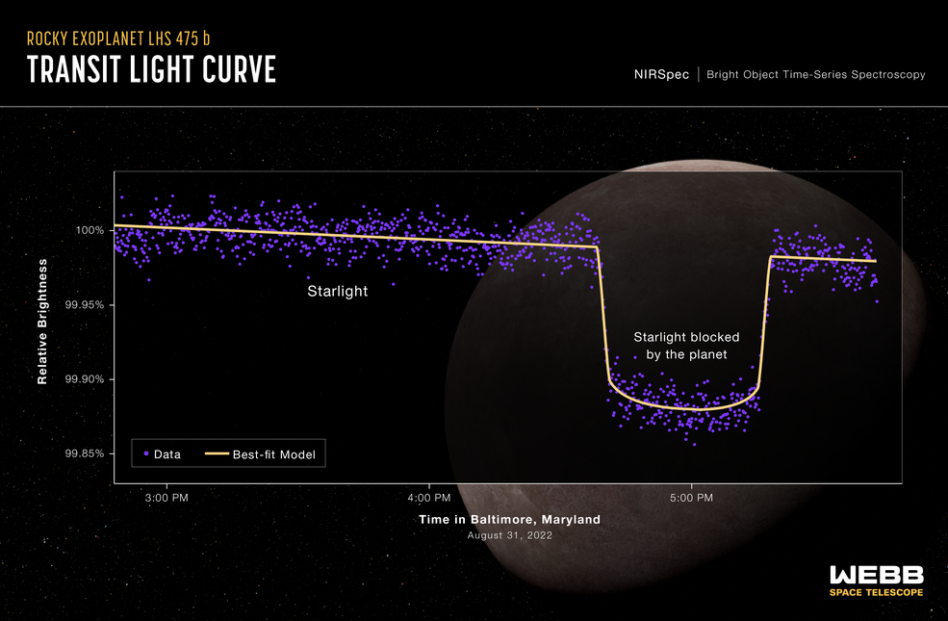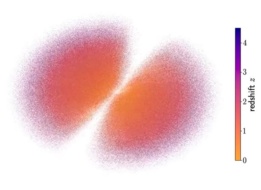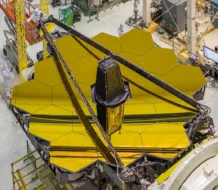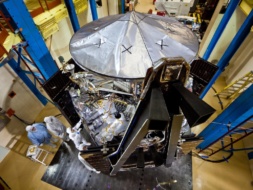JWST has confirmed its first exoplanet—and it’s a good one.
Using the NIRSpec (Near-Infrared Spectrograph) instrument aboard the orbiting telescope, scientists identified an exoplanet (i.e., a planet in a star system besides our own) in the LHS 475 star system that’s about as similar to Earth as any we’ve found. The planet, called LHS 475 b, is almost exactly the same size as Earth at 99% of its size, and it has a rocky surface.
Spotting a transit: Exoplanets are too far away to see directly through a telescope, but there are a few ways that scientists can spot them. Arguably the most straightforward of these is the transit method, where a planet passes directly between its star and Earth, making the star appear to dim briefly. JWST used this method to find LHS 475 b.
LHS 475 b: The ability to spot and study rocky exoplanets is pretty new. JWST is the only telescope out there that’s actually able to tell us anything about their atmospheres. In the case of LHS 475 b, researchers can tell a few things—like the fact that it’s several degrees hotter than our own planet, and that its atmosphere is not dominated by methane—but it’s going to take time to nail down the details.
Elsewhere in Earth-like exoplanets…
Data from NASA’s Transiting Exoplanet Survey Satellite, or TESS, also revealed a previously unknown, remarkably Earth-ish exoplanet this week. TESS’s mission is to scan wide areas of the night sky for roughly month-long periods, catching the imperceptible dimming and brightening of stars over time to identify transiting exoplanets.
Recently, TESS gathered data from a star system called TOI 700. Scientists had already identified three planets orbiting this star—TOI 700 b, c, and d—but it was the identification of a fourth, TOI 700 e, that drew attention. This planet is about 95% the size of Earth, most likely rocky, and also orbiting within the habitable zone of its planet—the narrow band around a star where conditions could be right for liquid water to exist.
Let’s take it slow: As with so many things in science, we can’t jump to conclusions about the habitability of these brave new worlds. We still don’t know much about their structures or surface conditions, including whether they have atmospheres or what those atmospheres might look like.
It’s hard to deny, though, that this is an exciting time to be searching for signs of life elsewhere in the universe. “Webb is bringing us closer and closer to a new understanding of Earth-like worlds outside our solar system, and the mission is only just getting started,” said Mark Clampin, Astrophysics Division director at NASA.




